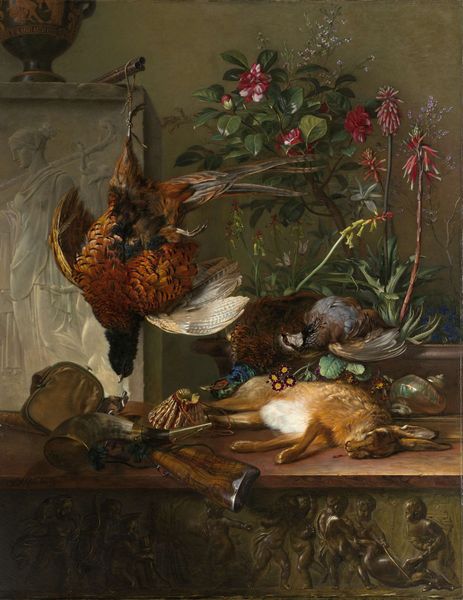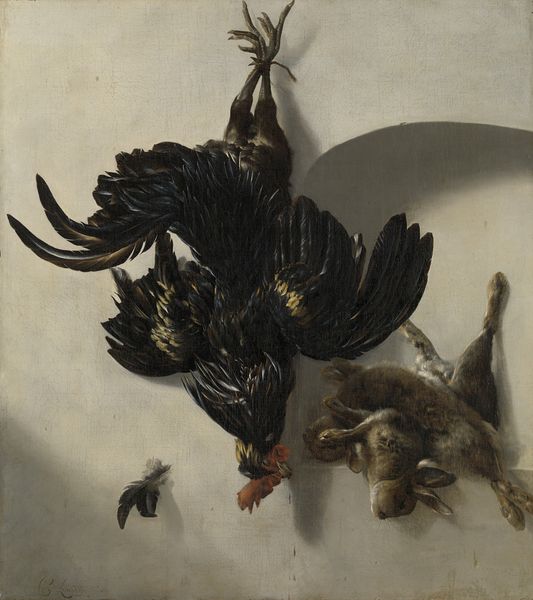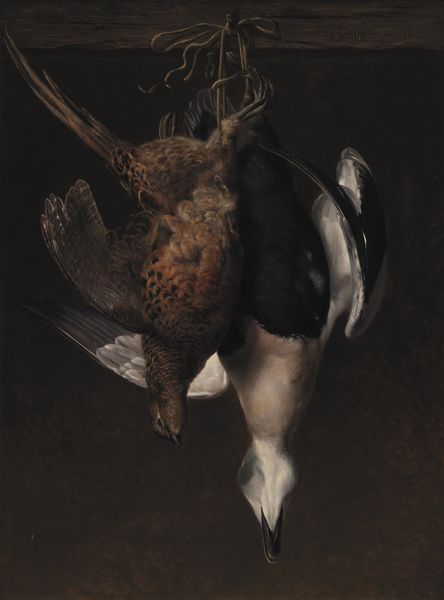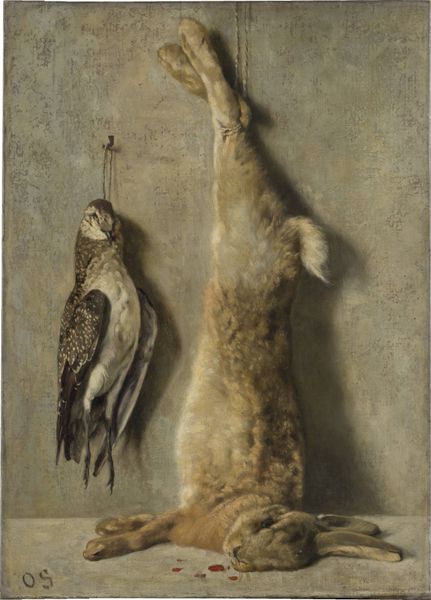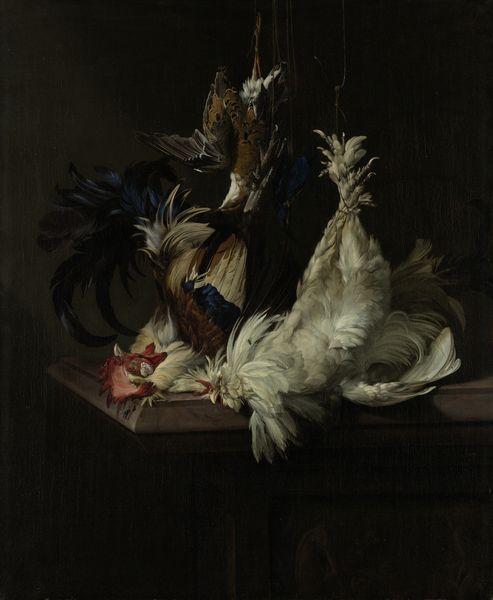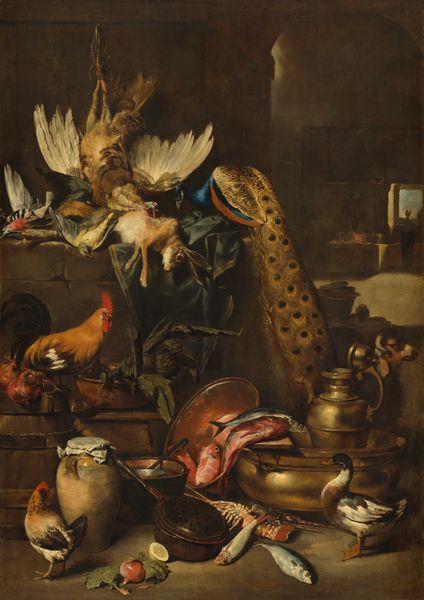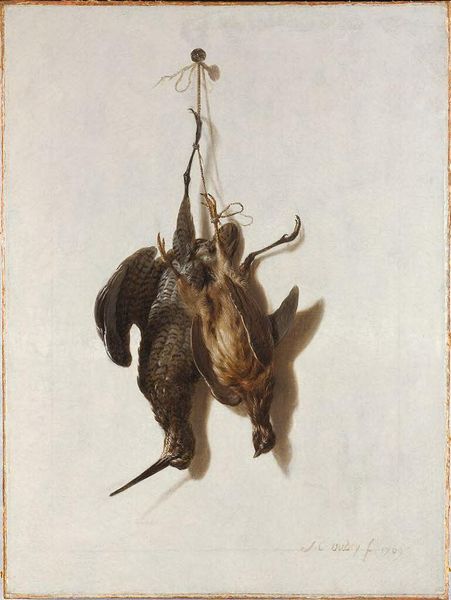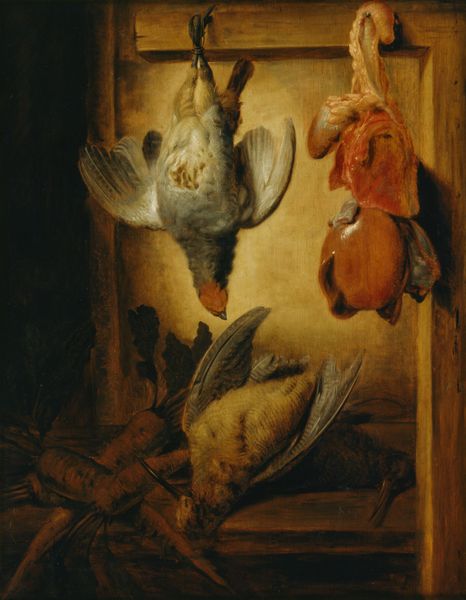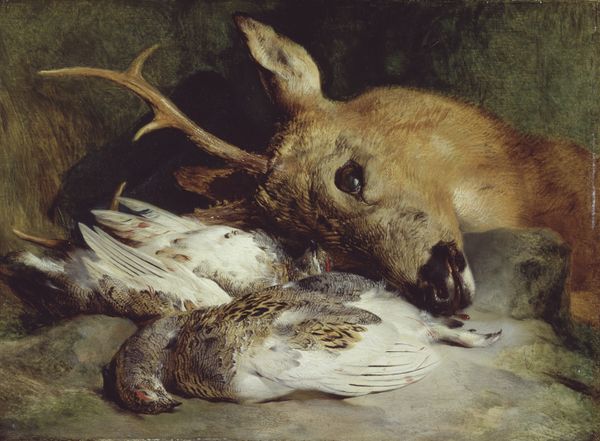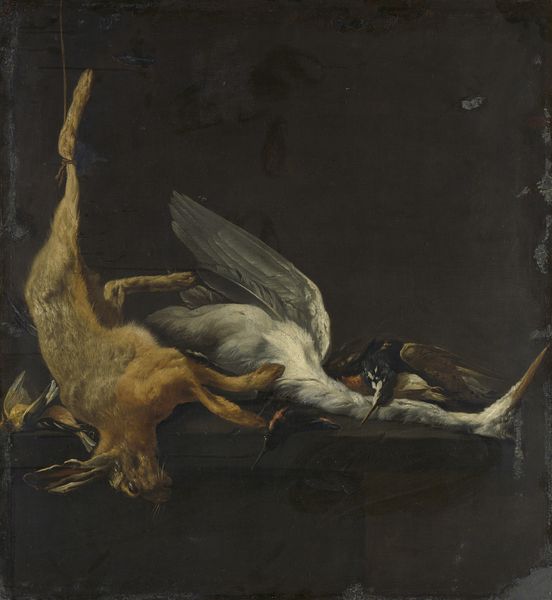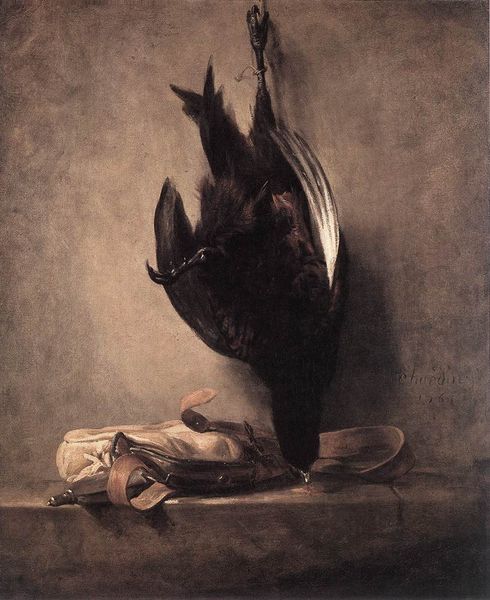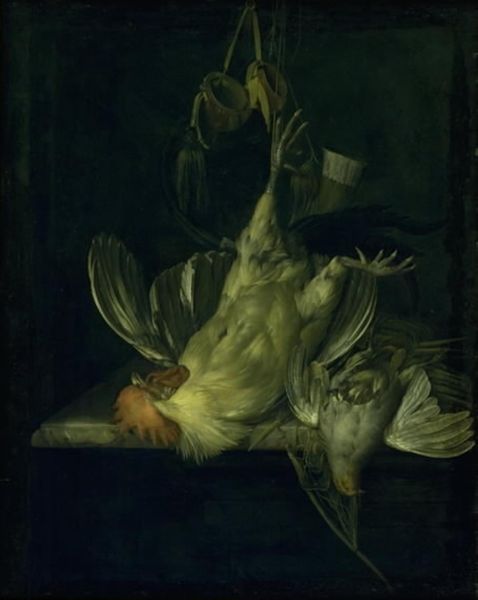
painting, oil-paint
#
gouache
#
baroque
#
painting
#
oil-paint
#
oil painting
#
genre-painting
#
realism
Copyright: Public domain
Editor: Here we have Jean-Baptiste Oudry’s “Still Life with a Hare, a Pheasant and a Red Partridge,” created in 1753, using oil paint. I'm immediately struck by the... well, the directness of it. Dead game, plainly displayed. What's your perspective on this work? Curator: The ‘directness,’ as you say, leads us to the heart of the work. Oudry presents us not just with dead animals, but with a meditation on consumption and status. Note the starkness of the background; it highlights the materiality of the wood as well as the ‘harvest’. How might the texture and precise depiction of fur and feathers engage the viewer of the time, especially regarding social hierarchies? Editor: I guess having this hanging in your home announced something about your ability to hunt, and, well, consume. Did the display of these materials – the animals, the wood, even the paint itself – hold some specific weight back then? Curator: Precisely. Consider the economic structures intertwined with hunting rights during the 18th century. These weren't accessible to all. The meticulously rendered textures serve as evidence of Oudry’s skill and, by extension, the patron’s wealth to commission such artistry. What could that labour signify, as commodity and value? Editor: So, it’s about skill and the power to commission skilled labor, represented through these very specific materials? That's a new way of seeing a still life, focusing on its production! Curator: It's about acknowledging art not as an isolated creation but as a product embedded in social relations, dependent on specific tools and processes, available only in select socioeconomic brackets. What is rendered, and *how* it's rendered, exposes underlying values and class distinctions. Editor: This focus on the material conditions of the artwork, really makes it seem to express the power of labor and economic class of the moment. I will keep that in mind when looking at art going forward!
Comments
No comments
Be the first to comment and join the conversation on the ultimate creative platform.
